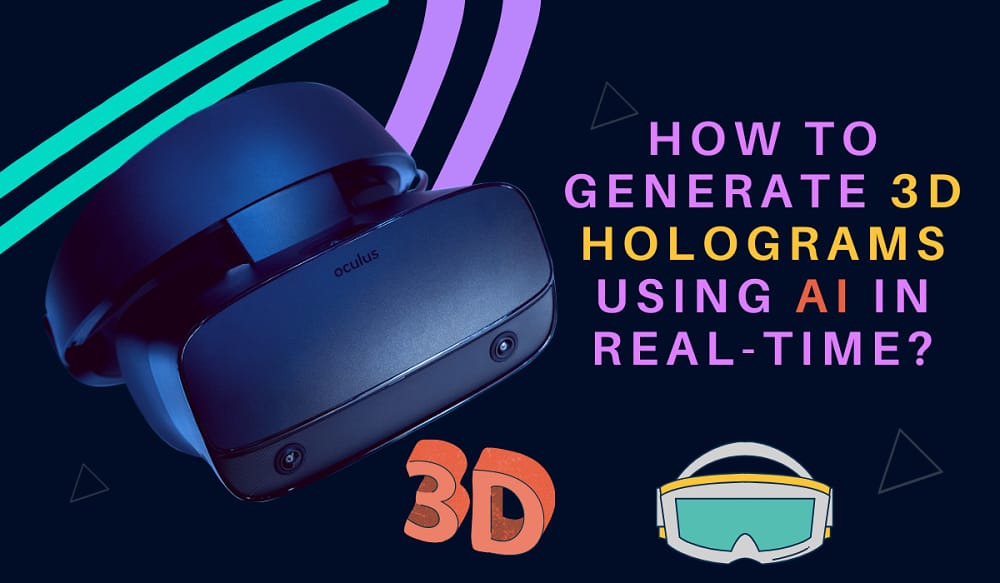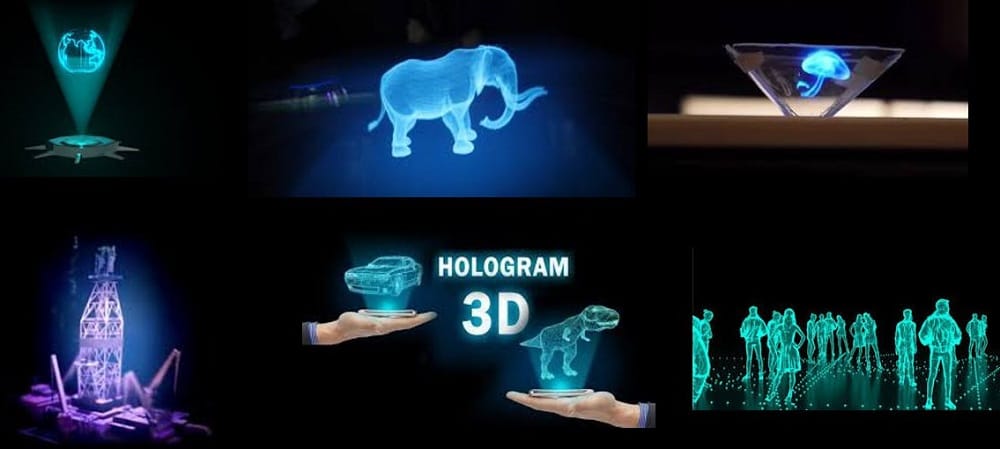Hey folks, welcome to this article we are going to discuss how to generate 3D holograms using AI in real-time. The technique which is booming in the IT industry, artificial intelligence formally called machines with the human brain. So, let’s move into the depth of this module and gain knowledge on the same.
How to Generate 3D Holograms using Ai in real-time?
Artificial intelligence, which is currently ruling in today’s industry, is contributing a lot in solving many real-time problems. So, with the help of this only scientists are researching and came to the fact that they can rapidly generate the color 3D photorealistic holograms even in the smartphone. But it is not limited to here, recent studies have shown that this technology could use in virtual reality (VR) and also in augmented reality (AR) headsets and other applications.
Tensor holography a new method that came into existence that enables the creation of holograms for 3D printing, virtual reality, medical imagining, and more it can run on a smartphone also.
What are holograms?
A hologram is nothing but an image that basically resembles a 2D window looking like a 3D scene. It is the way to generate an illusion of depth. The light waver is scattered by each pixel of a hologram that falls into it and making these waves interact with each other and generate the illusion of depth.
Similarly, a 3D hologram is defined as a 3D projection that exists freely in space like a 3D body and is clearly visible to everyone with their eyes without the need for 3D glasses. It is unlikely 3D television or virtual reality where we need a 3D glass. This is the reason that 3D hologram makes its place to use at 3D fairs, exhibitions, and other similar events.
The below diagram shows a glimpse of 3D hologram i.e, how realistic they look.
Because of the 3D hologram, the products are displayed in high quality, innovative and exclusive ways and can attract a large target group. Therefore, the method of using 3D holograms opens a new revolutionary and complete way of presenting or displaying the products.
A 3D hologram displays and presents the objects, products, and any animated sequences in such a way that it seems to be a real object or to float completely freely in Space. The 3D hologram is visible from all the side to the user, that means the user or observer can walk around all the sides of the hologram and can enjoy the realistic look of the image.
Basically, holography is used for product presentation or creates new possibilities for 3D dimension product or object. It has become the next stage of photography and conventional film.
It delivers a very good and realistic representation of the 3D world around us. It allows us to shift based on the user’s or viewers’ positions.
What all things a required to display a 3D hologram?
Basically, 3 things are required to display a 3D hologram, and that is.
- A holography pyramid or holography display or is also known as a hologram projector, because of this only a holographic 3D projection is possible.
- A 3D hologram to displays the content accordingly and that is also projected straight directly into the room, then only the content is displayed.
- Something that should be displayed by the hologram i..e, an object or it can be any real product.
How to generate 3d real-time hologram?
The new approach in the market called the tensor holography, because of this approach it becomes easy to generate 3D holograms that allow holography to reach realms of VR and 3D printing.
According to the recent studies and the researcher’s actions, they explained that deep learning technology is used to accelerate computer-generated holography, which allows the generation of the hologram in real-time.
A CNN or convolution neural network, which is basically a processing technique that uses a bunch of trainable tensors, to know how visual information is processed by a human, was designed, and this is accomplished by a large, high-quality data set which didn’t exist for 3D hologram, was needed to achieve that.
Then a database of 4000 pairs of computer-generated images, including color and depth information was built.
Now the next step was the job of CNN and therefore the convolution neural network got on the job by using all the data in order to learn that how to generate holograms for the images. The neural network which was built was much faster than all the manual physics-based calculations and shown a very efficient result with the smooth-running process that amazed all the members present there. And with this innovative process, it was able to generate or produce the new holograms from the images with depth information.
It can able to create 60 color 3D holograms per second and that too with the resolution of 1920 by 1080 pixels on a single grade consumer GPU i.e., it can easily run on an iPhone 11 Pro with the rate of 1.1 holograms per second. The new system that is mostly used in today’s industry requires less than 620 kilobytes of memory.
Therefore, this suggests that the new system can be able to create a hologram in real-time on future AR and VR mobile headsets. 3D Printing, visualization of the medical data, microscopy, and the design of surfaces with their unique properties can come to other fields where this system could see a large application.
I hope, you all enjoyed reading this module and gain knowledge in the same, you all must be excited or got fascinated to know that how deep learning is playing its important role and bringing such more exciting concepts in the world. For more amazing articles like this. If you are also a technology freak and want to be updated with upcoming technology, stay connected with us. Until then, keep learning, stay happy, keep reading.

